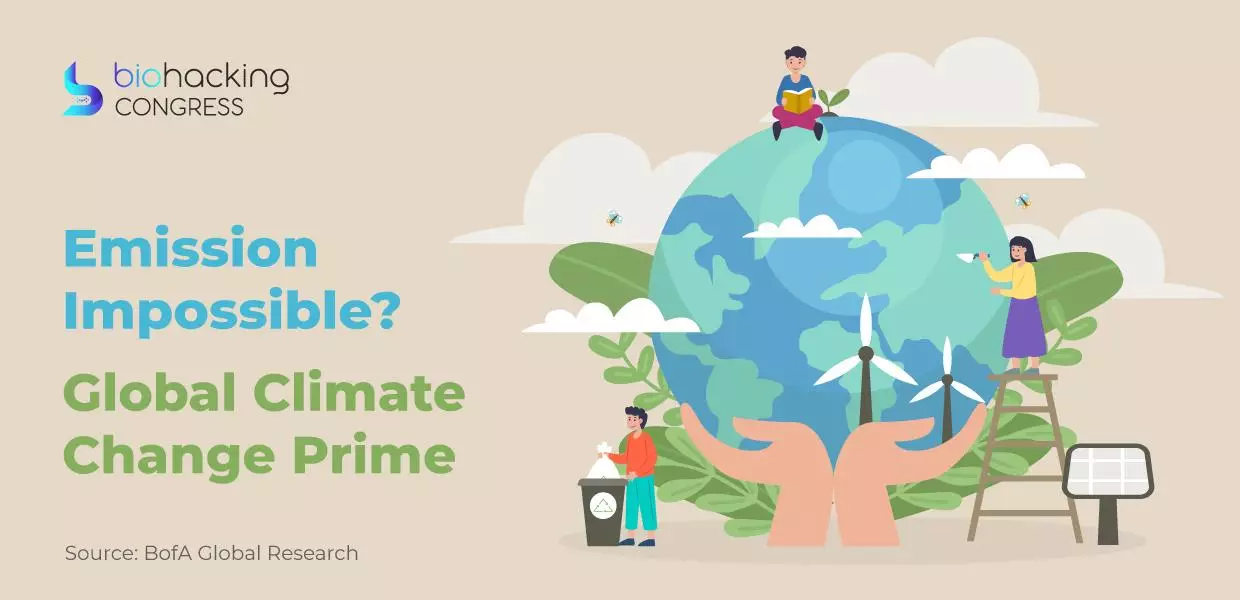Emission Impossible? Global Climate Change Primer
Climate Change: it’s not just our kids’ problem anymore.
Climate change is not just an “E” problem in ESG: the social costs are high, with forecasts of 1.8bn people set to live in absolute water scarcity by 2025, 100mn pushed into poverty, and 800mn at risk from rising sea levels. And climate migration could reach 143mn from LatAm, Sub Sahara and South East Asia driven by extreme weather. The potential impact on the economy and markets could be significant: economic damage could equate to >3% of GDP loss every year by 2030, growing to US$69tn by 2100; c.5% of global equity stock market value (US$2.3tn) could be permanently wiped out by climate policy re-pricing, and the potential impact to corporate earnings could be extreme for certain sectors. When environmental, economic, and social megatrends collide, it often impacts political, geopolitical and globalism paradigms. The good news: we have economically viable, socially demanded and technologically proven solutions that could create a >US$2tn pa investment opportunity by 2025.
Climageddon: did you know?
- Humanity is currently using 1.75x more biological resources than our planet’s ecosystem can regenerate.
- Around 30% of the world’s population is exposed to deadly heat levels for at least 20 days a year.
- Climate change will cost 3.2% of GDP by 2030, up from 1.6% today (US$1.2tn).
- The global apparel textile industry has a higher carbon footprint than airlines and shipping combined.
- 87% of countries could power themselves with renewables using <5% of their land. Yet 2019 global renewable funding rose only 1% y-y, indicating inaction.
- Sending 20 emails a day over a year creates the same emissions as a car traveling 1,000km.
- Concrete is responsible for 4-8% of the world’s CO2 emissions, which is more than airlines.
- Eating 1kg of steak is equal to using 16k liters of water (3.5 months of showers).
- The past five years were the hottest since records began....the 20 warmest years on record were in the past 22 years.
- A group of the world’s biggest companies with c.US$17tn market cap values the climate risks to their businesses at almost US$1tn.
- Having one fewer child avoids emissions equivalent to 36 transatlantic round-trip flights.
- Agriculture is causing more damage to oceans than plastic – the cost of excess fertilizer run-off into the oceans is US$200-800bn.
- Every 1C rise in temperature could increase E. coli-caused diarrhea by 8%.
- In a no-climate-action scenario, the average US citizen would lose about 10% of their income by 2100 while global GDP per capita would fall by 7.2%.
- Air pollution kills 7 million people each year, costing US$5tn/year.
- Australian bushfires have burnt an area greater than the size of Portugal since September (97k km2) and emitted 2/3rds of the nation's annual carbon emissions compared with a normal year.
- Canada is warming at 2x the global average, while Indonesia is planning to move its capital from Jakarta inland due to rising sea levels and increasing floods.
Climate Change will define the 21st century
The 2020s – “Make-or-Break” decade for climate action
Why the 2020s? Because at the current pace, the carbon budget to 1.5°C warming would be exhausted by 2030 leading to catastrophic warming long term, extreme impacts for life on earth (e.g. extreme weather, mass migration, conflict) and trillions of dollars of economic losses (3.2% GDP risks by 2030). If climate change is not tackled aggressively this decade, it may be too late. Towards the end of the last decade, we got a glimpse of climate change impacts, especially the record wildfires in California, the Amazon, the Arctic and Australia. But impacts will get much worse as even a small rise in warming, such as 2.0°C rather than 1.5°C, magnifies climate risks materially.
Technology could solve some issues: Key cleantech solutions like renewables, electric vehicles and energy storage are now viable. 87% of countries could power themselves with cheap renewables using less than 5% of their land. Moonshot tech like climate controlled farming, meatless meat, electric flight and geoengineering are on the horizon.
But human behavior needs to change: Technology can cut emissions in energy and transport but behaviour change in food (less or no meat), travel (public transport and trains vs. flights) and consumption (re-use, repair, live with less, local) is also vital.
And policy needs to ramp up….exponentially: Humanity needs to move aggressively to a low carbon economy in the 2020s. “Net Zero by 2050” should really be “Net Zero by 2030” – better to “aim high, fall short” than “aim low, surely fail” on climate, we believe. Younger generations are to lead policy change through their activism and life choices.
Clean economy opportunity: A big transition to tackle the climate crisis will adversely affect the fossil fuel ecosystem but also create multi-trillion-dollar opportunities.
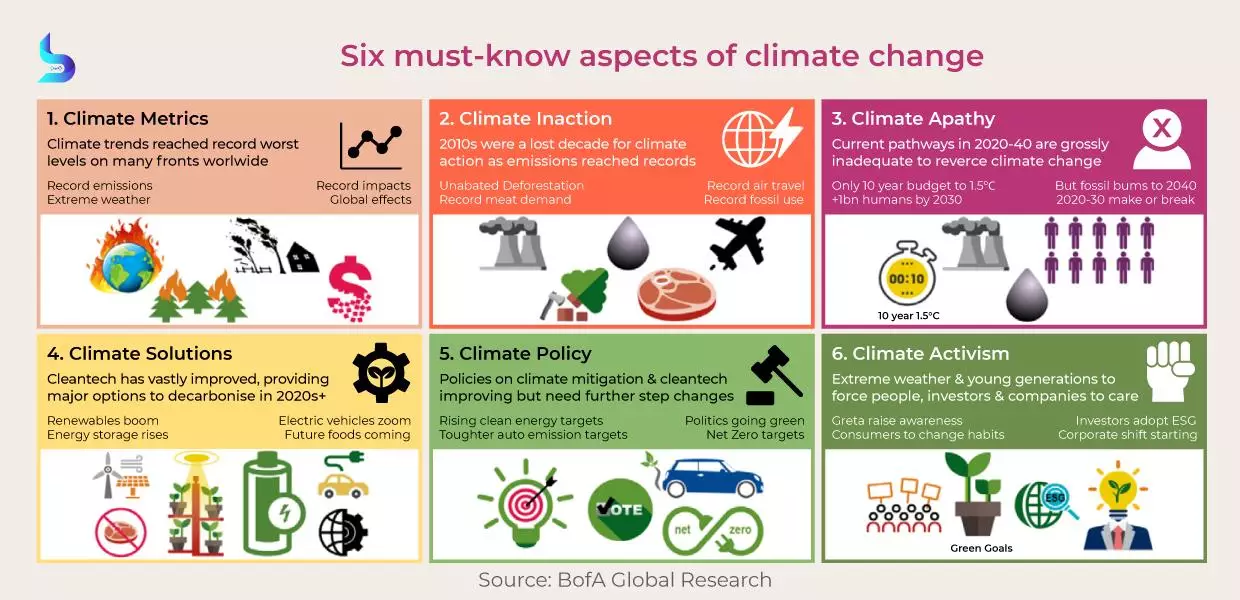
Impact is reaching boiling point
Extreme weather events are intensifying worldwide
The incidence of extreme weather is rising worldwide in its many forms such as tropical storms, droughts, heatwaves, floods, wildfires and extreme cold, among others. 40% of US cities were affected by some form of extreme weather in 2018 compared with only 15-20% over the 20th century (5-year rolling average) (source: NOAA).
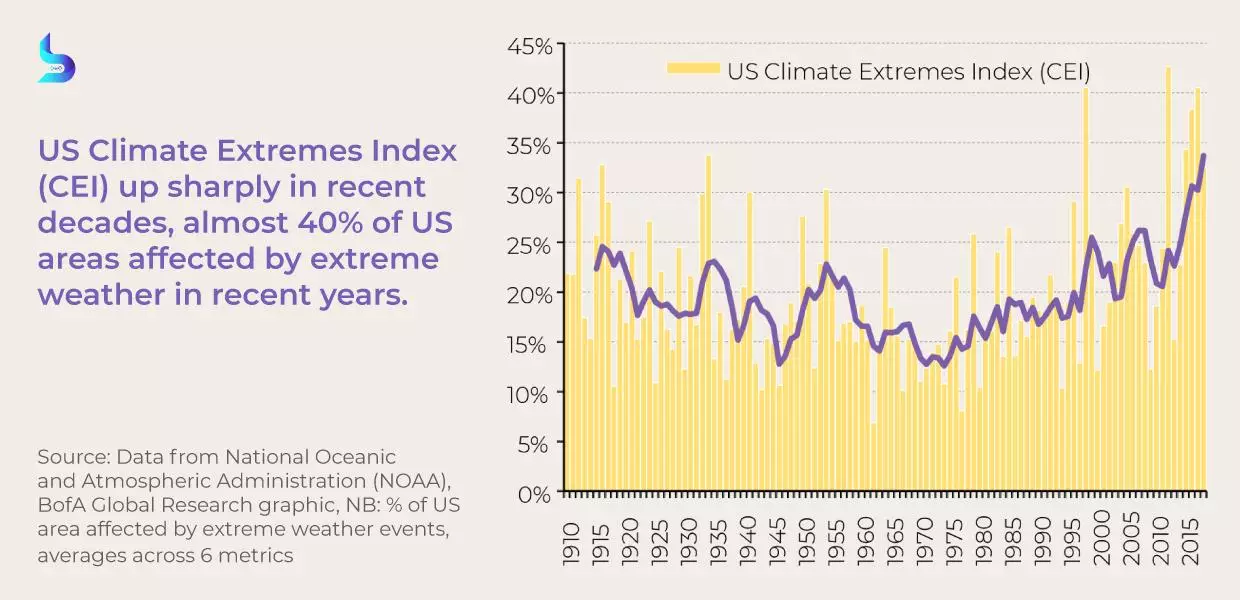
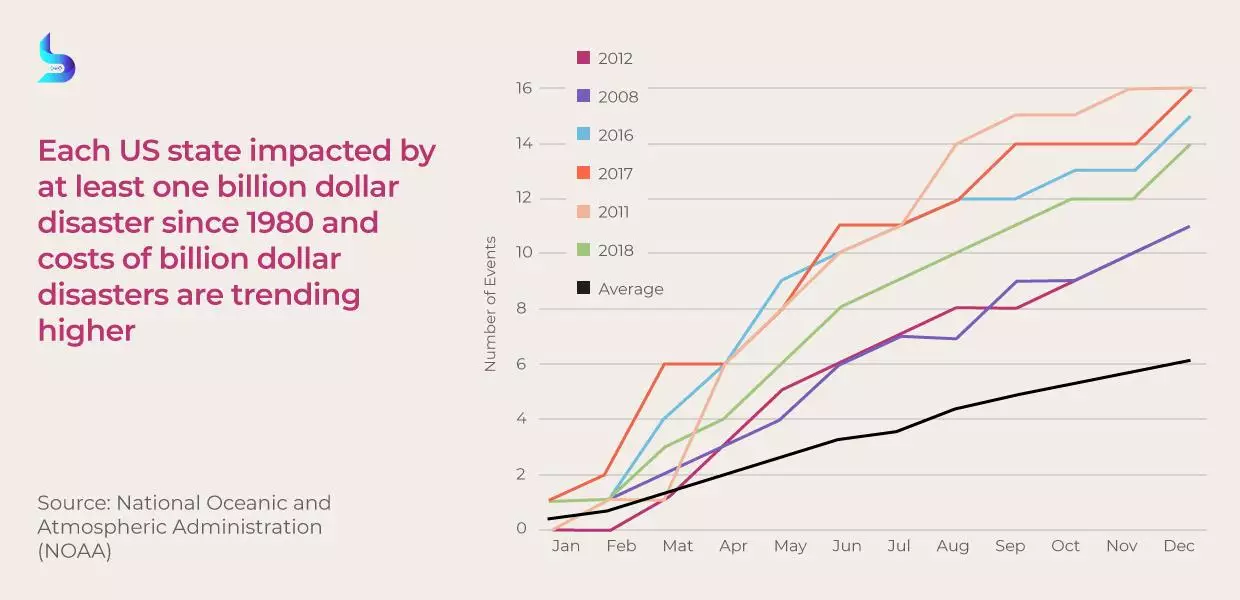
Extreme weather costs are rising every year
The cost of US extreme weather in 2016-18 (US$461bn) is more than in any 5-year period after the 1990s. Record 5-year climate-related costs are expected in 2016-20.
-more-than-any-5-year-period-after-1990.jpg)
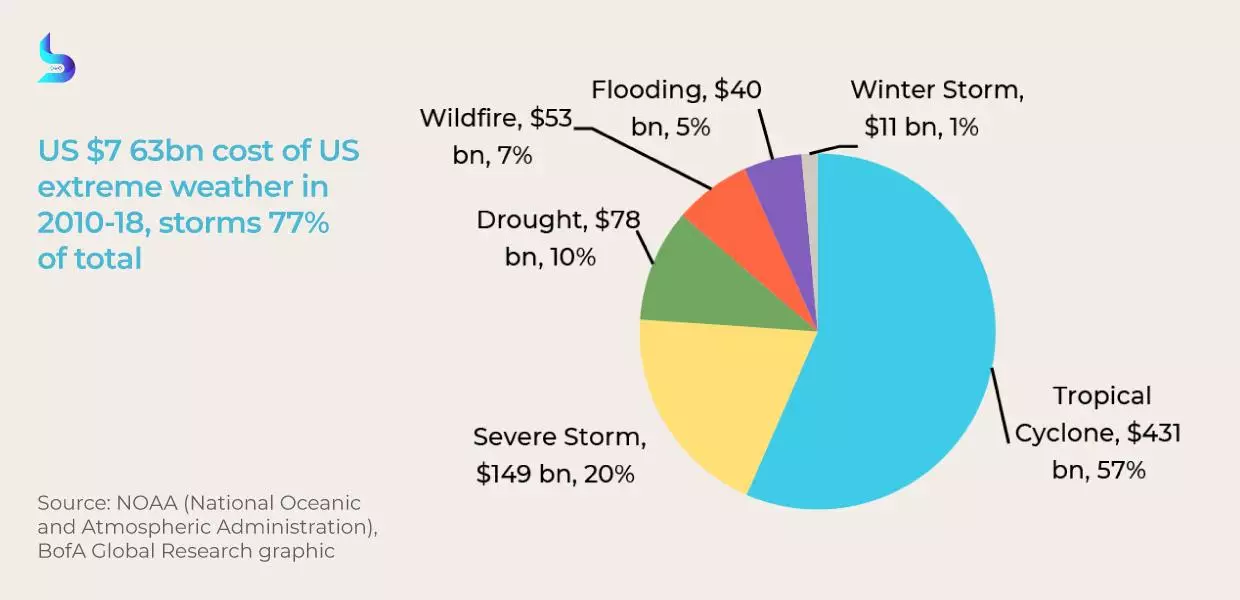
Spillover: it’s not just an environmental problem anymore
Peak Globalization: fanning the geopolitical flames
Climate change-induced resource scarcity and the economic disruption from shifts in traditional industries and migration waves could be key contributors to “peak globalization”. This will further exacerbate the on-going curtailment of the free movement of goods, capital, knowledge, people and information between countries. Furthermore, geographical regions reliant on crude exports and facing “peak oil” in carbon-intensive sectors could be disrupted and face major job losses. As a result, any carbon-reductive policies that enable the transition towards a cleaner economy might come at the expense of economic growth, at least in the short term. Ultimately the spillover effects of climate change could result in governments facing further challenges from the rise in populism and polarisation.
Activism: driving policy and capital
Climate Change is a key agenda item for political parties, consumers and corporates in the 2020s
Climate change is starting to become a key agenda item in politics (e.g. US Democratic Primaries 2019, Greens gaining in Europe), among consumers (veganism, anti-plastic, flight shaming) and for corporates (100% clean energy goals, circular economy focus). Climate activism is on the rise, e.g. Greta Thunberg’s climate strike movement, Extinction Rebellion protests, etc. In some cases, activism can be even more extreme, e.g., Heathrow Pause aims to use drones to halt flights and cut CO2. Climate Action could be one of the biggest transformations of the global economic landscape, impacting current practices in many areas, such as energy, farming, transport and even globalisation / consumerism (local production, sharing, less fast fashion). Emission regulations are becoming tougher, e.g., renewable targets, carbon pricing, charges for high-polluting vehicles and airline taxes, which will drive major change.
To put the public shift into perspective, by the widest margin since 2000, more Americans now believe environmental protection should take precedence over economic growth when the two goals conflict more. 65% now choose the environment, while 30% choose the economy (source: Gallup). Furthermore, use of the term “climate emergency” was 100x more common in 2019 than the previous year (source: Oxford Dictionary, WEF), as people around the world increasingly directly feel the effects of the climate crises, e.g., Australian bushfires, Amazon and California wildfires etc.
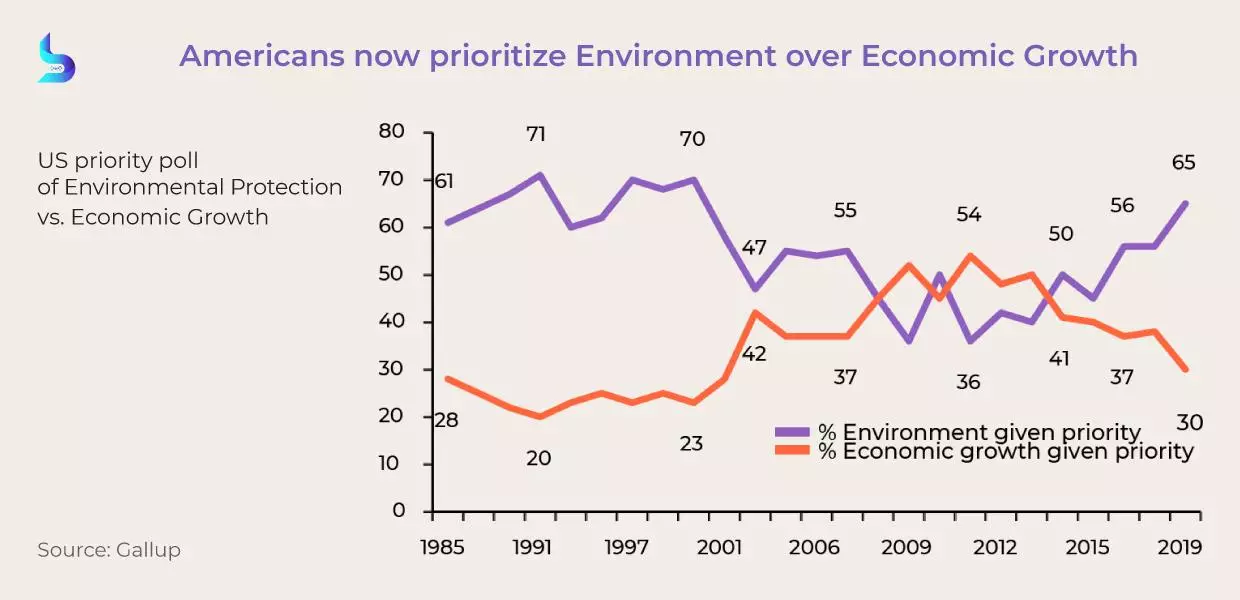
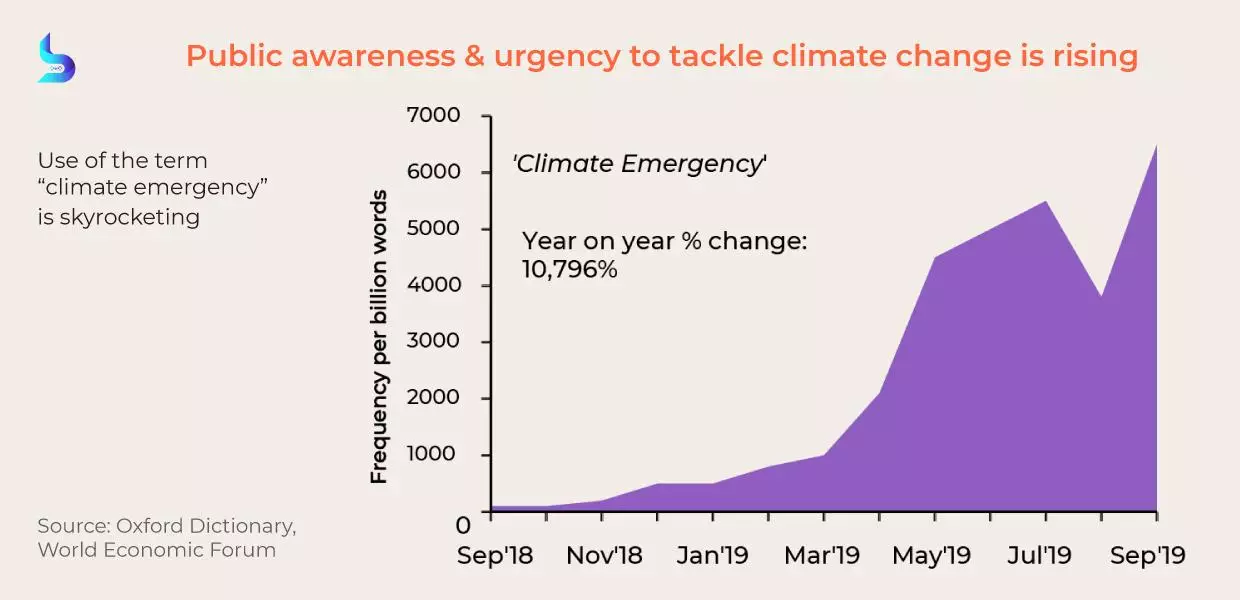
These trends have sustainability, climate change, health, and less resource use at their core. Niche green trends may not curb emissions much but they influence policy and attitudes towards high-emitting industries (e.g. energy, transport).
While much of the climate activism has been directed through more niche topics, such as plastics and flights, overall climate awareness and growth may see action in other more traditional consumer practices, ranging from transport to energy.
Less/no meat or animal products: There is a growing trend towards reducing consumption of meat or animal products (milk, leather), or even becoming vegan. Health benefits, animal welfare, and the climate impact are key reasons for the shift.
Meat substitutes: Start-ups are trying to commercialize meat substitutes, ranging from vegan burgers and plant-based burgers that taste/feel like a meat to even lab-grown meat. Already some major fast-food chains are sourcing meat substitutes.
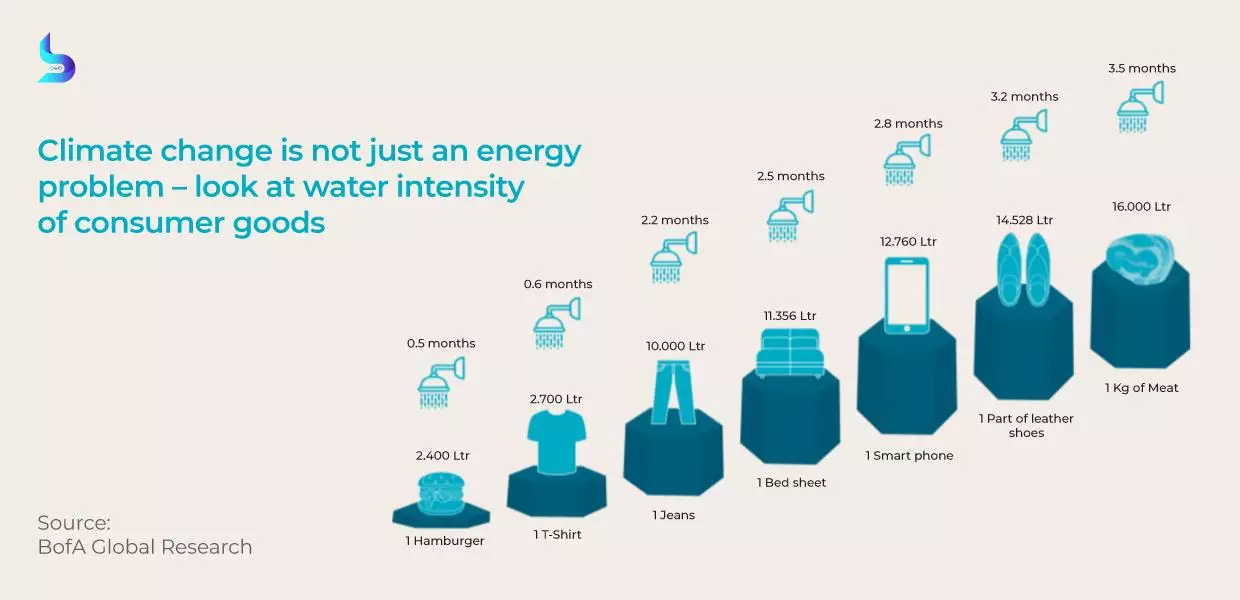
Ride pooling & micro-mobility: This ranges from not owning a car and using ride-hailing to ride pooling (e.g. sharing an Uber/Lyft) and micro-mobility (scooters, bikes) to reduce carbon footprint, save on costs and gain health benefits.
Flight shaming, train bragging: An emerging trend towards reducing flights taken to curb personal CO2 emissions. This is catching on, particularly in Sweden, helped by Greta Thunberg’s climate change movement, with new Swedish terms, such as flygskam (flight shame) and tågskryt (train brag) gaining popularity. Air travel has grown almost every year since 1990 and changes in consumer behavior are key to cutting this growth. In Europe, there are plans to revive overnight sleeper trains.
Ethical fashion: The global apparel/textile/fashion industry has a higher carbon footprint than airlines and shipping combined. As a result, climate-conscious consumers are looking at more sustainable options, such as renting, used clothes, fewer purchases, longer-lasting high-quality, natural fibers, local production, etc.
Corporate CO2 curbs: Corporates are starting to focus on CO2 and their climate footprint. Some tech companies are procuring (or planning to procure) 100% of their energy from renewables but climate measures go beyond this into recycling, the circular economy, and product design/materials, even tracking the executive CO2 footprint. There are now even “net-negative” emission targets by 2030.
Climate-controlled farming: Climate-controlled farming in its many forms, like vertical farms, greenhouses or hydroponics, is much more efficient than traditional farming (yield, resource use). Energy-use challenges can be solved by cheap abundant renewables. There is growing interest in this area, primarily to reduce climate risks.
Local production: Climate-conscious consumers are starting to choose locally grown or produced food/goods over imported, to reduce their climate footprint.
Right to repair: Repairing gadgets/machinery to prolong life is gaining momentum, with rules likely to be supportive (e.g. EU proposals on right to repair). Even community movements around repair & reuse are emerging (e.g. Restart project).
Climate Costs: US$69tn by 2100
US$54-69tn climate costs by 2100
Different published analyses point to varying climate change impacts, but all show large impacts. As per Moody’s, if the average global temperature soars to 1.5°C above preindustrial levels – the lower limit of the Paris climate agreement – the cost to the global economy is estimated to be US$54tn in 2100 but under a warming scenario of 2°C, the cost could reach US$69tn. Global annual cost could reach $5.7tn by 2100 according to the American Geophysical Union. In contrast, the Economist estimates value at risk (VaR) due to climate change at US$4.2tn, or 3% for private investors (up to US$13.8tn in extreme scenarios), while the OECD estimates US$6.9tn as annual spend required to meet climate and development objectives for 2030, indicating an unprecedented transformation of current systems. Global warming could cut global GDP by up to 7.5% by 2050 (Oxford Economics) while unmitigated warming could reduce global incomes by ~23% by 2100, widening income inequality (Burke, Hsiang, and Miguel, 2015).
Source: BofA Global Research bit.ly/2G7XaaU
Special Access to
Exclusive TopBiohacks
and more

